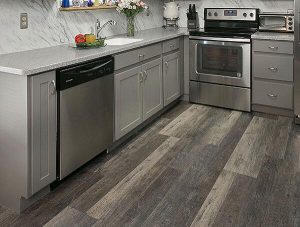 Laminated flooring has become the most popular type of hardwood floor in use today. The laminated flooring has become so popular because of its affordability, but also because of the various decorative options that it offers its owners. Laminated floors are constructed using a combination of two layers of hardwood, or wood planks. The lamination process used to construct these floors is done using a resin medium. This medium has an important role in the durability of the flooring, its attractiveness, and its luster.
Laminated flooring has become the most popular type of hardwood floor in use today. The laminated flooring has become so popular because of its affordability, but also because of the various decorative options that it offers its owners. Laminated floors are constructed using a combination of two layers of hardwood, or wood planks. The lamination process used to construct these floors is done using a resin medium. This medium has an important role in the durability of the flooring, its attractiveness, and its luster.
Laminated flooring is typically a multi-layered synthetic material fused together with an additional lamination process known as hot stamping. Most laminate floors have two to ten layers of boards bonded together using hard boiled foam and a hard glossy glaze. The middle layer, which is usually made of melamine resin is commonly made of acrylic paint with an ultraviolet inhibitor. The outer core layer is often made of high quality fiber board and melamine resins.
There are many different styles of laminate floor covering. All of the different styles, however, share some common characteristics that make them appealing to most buyers. The most popular form of laminated flooring is the planar floor covering. These planar floorings are made by bonding the planks of the floor to a center block. The planar floorings are available in various widths and heights. Each planar floor covering has its own set of installation requirements.
When purchasing laminate floors, you need to make sure that they meet your specific floor covering requirements. In order to get the most out of your new laminated flooring, you will want to ensure that they meet or exceed the specifications of your local building codes. The most common building codes that require laminate floors to meet or exceed are: Residential Good Condition Code (RNCC); Commercial Good Condition Code (GCPC); and Massed Board Condition (MBBC). If you have any questions about your particular building codes, you can contact your local building department to be sure that your laminate floors are up to code.
There are several additional measurements that need to be taken when it comes to laminate floors. One such measurement is the minimum moisture level that is required to remain in the planks of the floor. Another measurement refers to the maximum water content that is allowed to remain in the planks of the floor. Yet another important measurement refers to the degree of “slippage” that occurs when the planks are walked on. When these two measurements are combined, you can come up with an equation that indicates the moisture level and water content in the planks of laminated flooring. This equation is referred to as the moisture contact formula.
With these measures in hand, you will be able to obtain a more accurate answer as to whether your laminated flooring will prove to be a viable option for you or not. As previously stated, it is always a good idea to use the moisture contact formula when you are evaluating the durability of your laminated flooring. One way to determine the degree of moisture contact is to place a sheet of aluminum foil on the top of the planks. This method will allow you to look into the top surface of the planks without actually touching them. If the foil shows signs of moisture seeping through, this could mean that the laminated flooring you are considering may not be the best option for you. It would be wise, therefore, to look into other options. For more details on laminated flooring visit flooring expert near you or visit www.denverflooringcompany.com.